External Datasets
External datasets on amorphic let users consume their existing data present in S3 buckets directly without having to ingest them into a new amorphic dataset.
How to Create External Datasets?
Users can create external datasets by setting the Dataset Type attribute to 'external' and providing the source s3 location as the Dataset S3 Path. External datasets can be targeted to S3 and Lakeformation target locations.
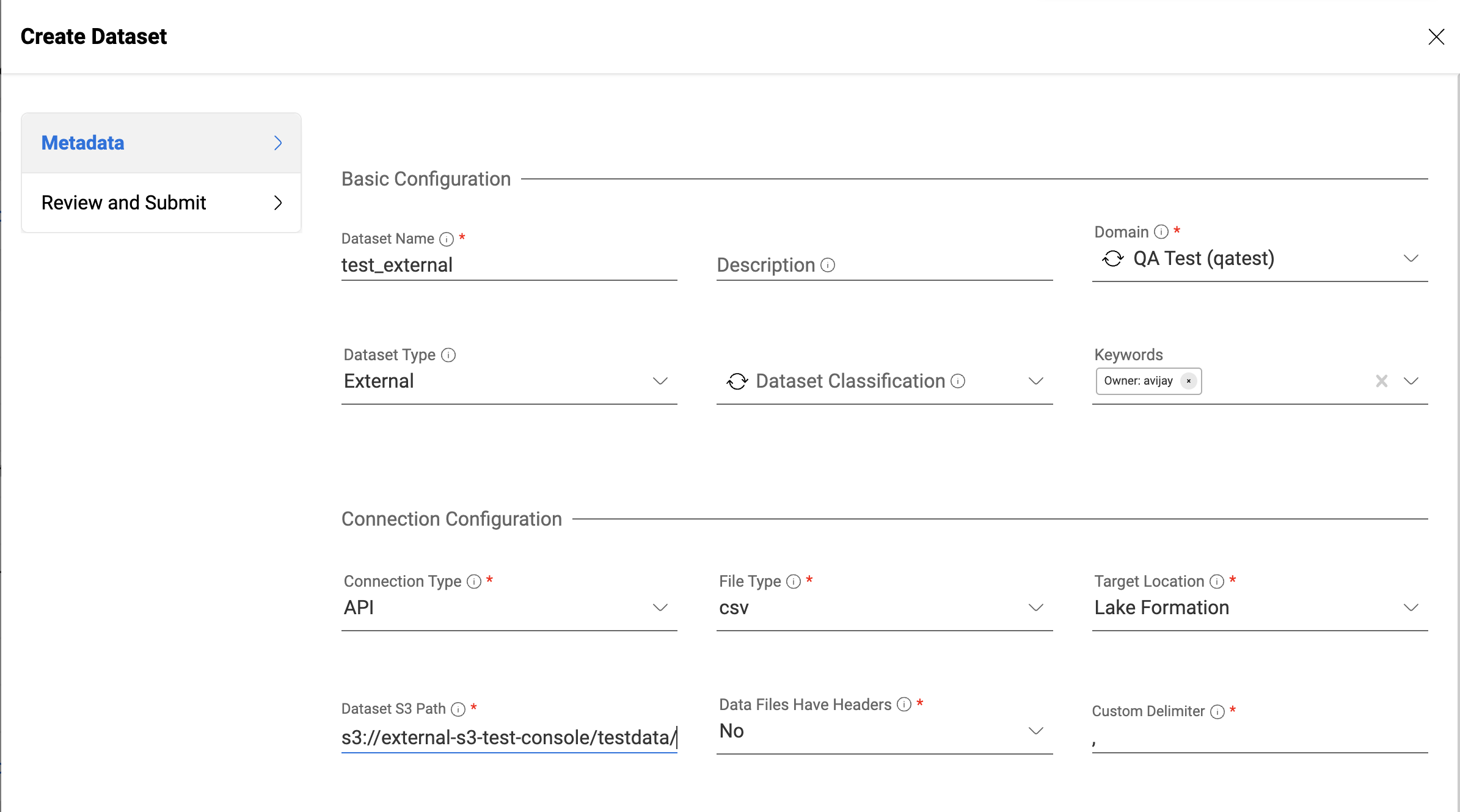
On creation of the dataset, users will be provided with a Dataset Role Arn and a bucket policy. They need to attach the bucket policy to the source bucket as part of Dataset S3 path for amorphic to access the data in it.
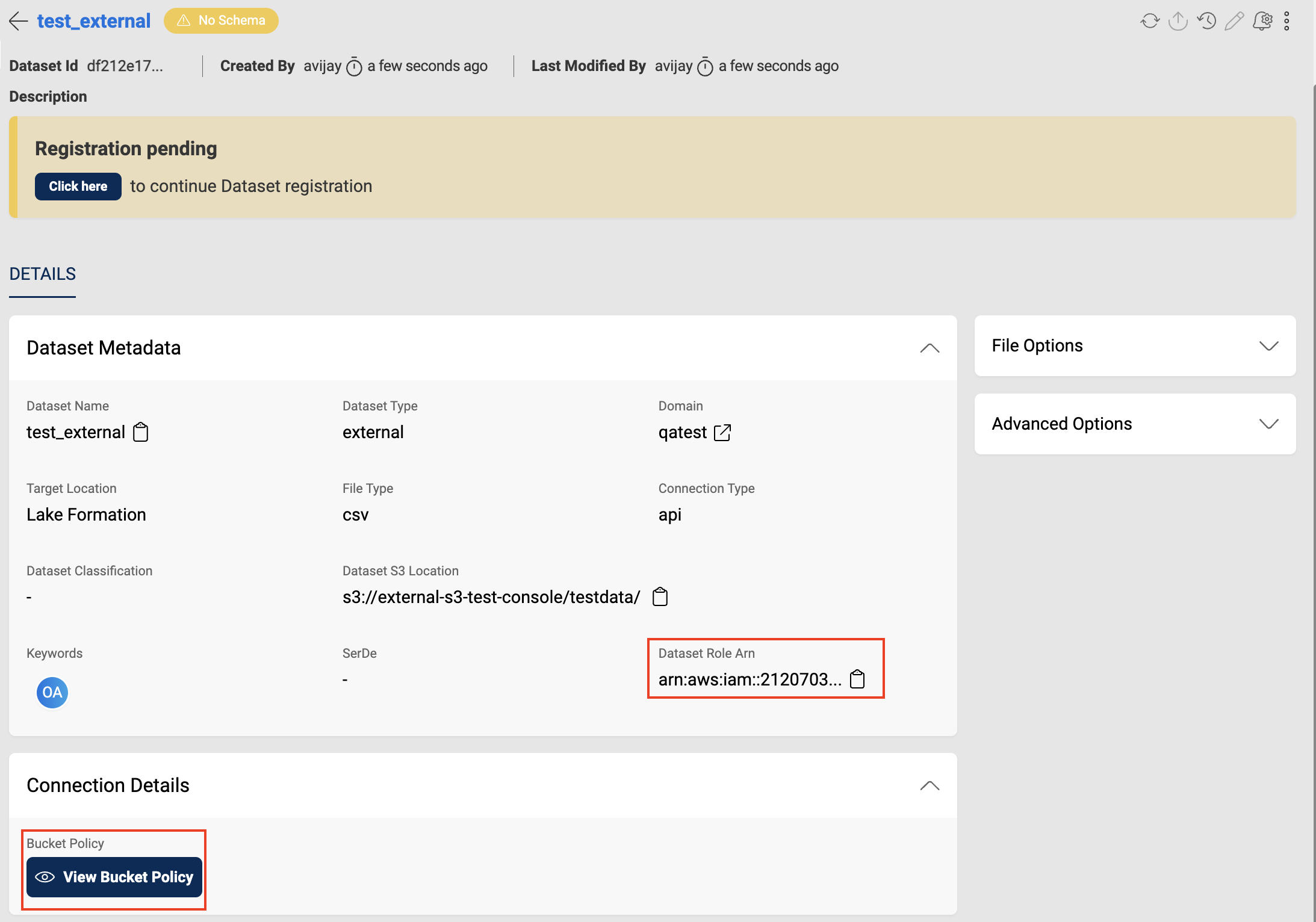
If the source S3 bucket is encrypted with a custom KMS key, users will have to allow the dataset role to access that particular KMS key. A sample key policy for this is provided below.
{
"Version": "2012-10-17",
"Id": "amorphic-external-dataset-access",
"Statement": [
{
"Sid": "AllowAccessForExternalDataset",
"Effect": "Allow",
"Principal": {
"AWS": [
'arn:aws:iam::XXXXXXXXXXXX:role/<your-external-dataset-role-name>' #### Replace this with the dataset role arn
]
},
"Action": [
"kms:Decrypt",
"kms:GenerateDataKey*",
"kms:DescribeKey"
],
"Resource": "*"
}
]
}
Partitioned Datasets
If the data in the source S3 location is partitioned, users need to specify this while completing the dataset registration. On completing the dataset registration, users need to run the MSCK REPAIR TABLE query through the query engine to load the partitions into glue.
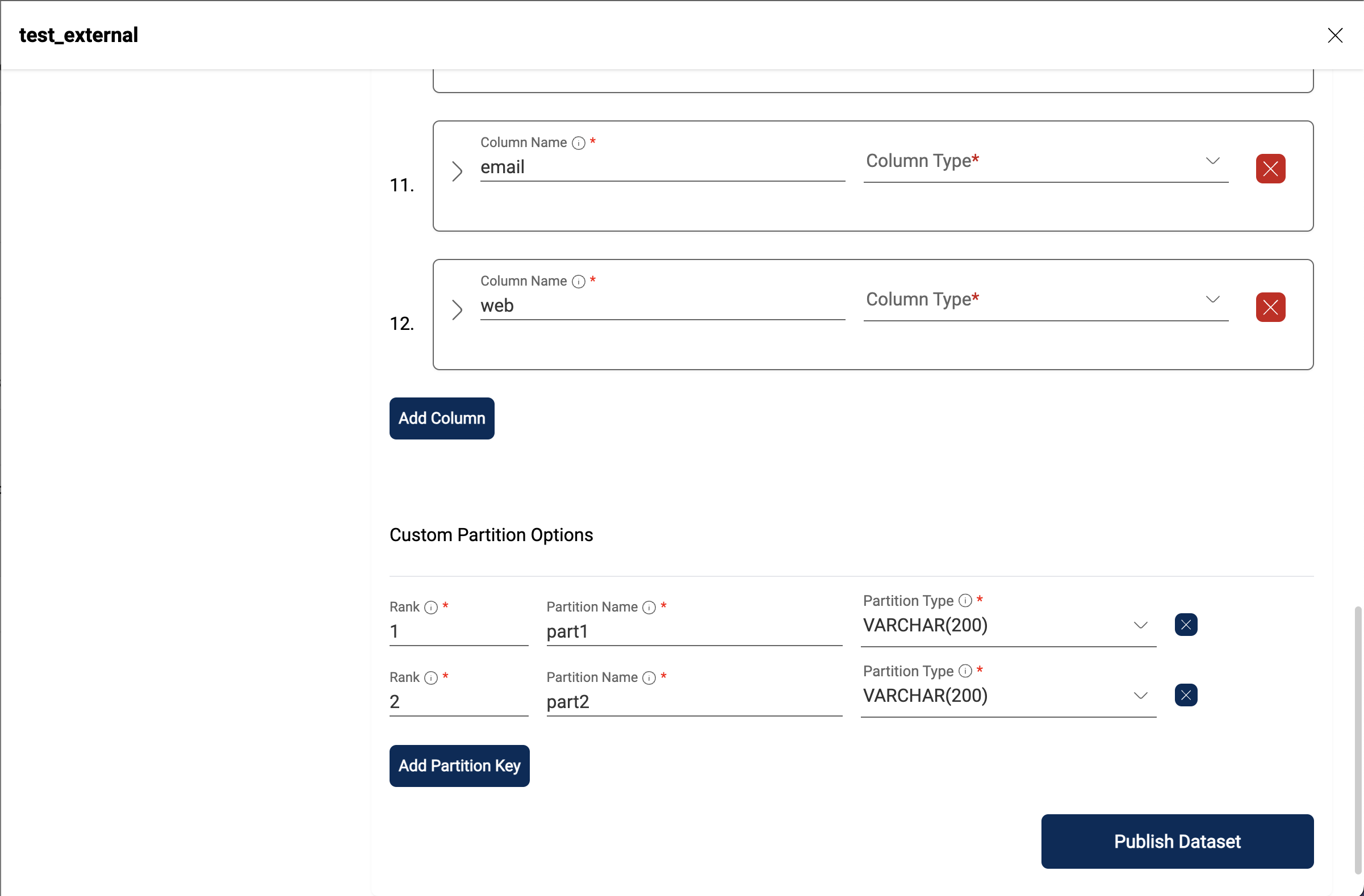
To view the partitions in glue, Users can run SHOW PARTITIONS query in 'Query Engine' against the specific external dataset.
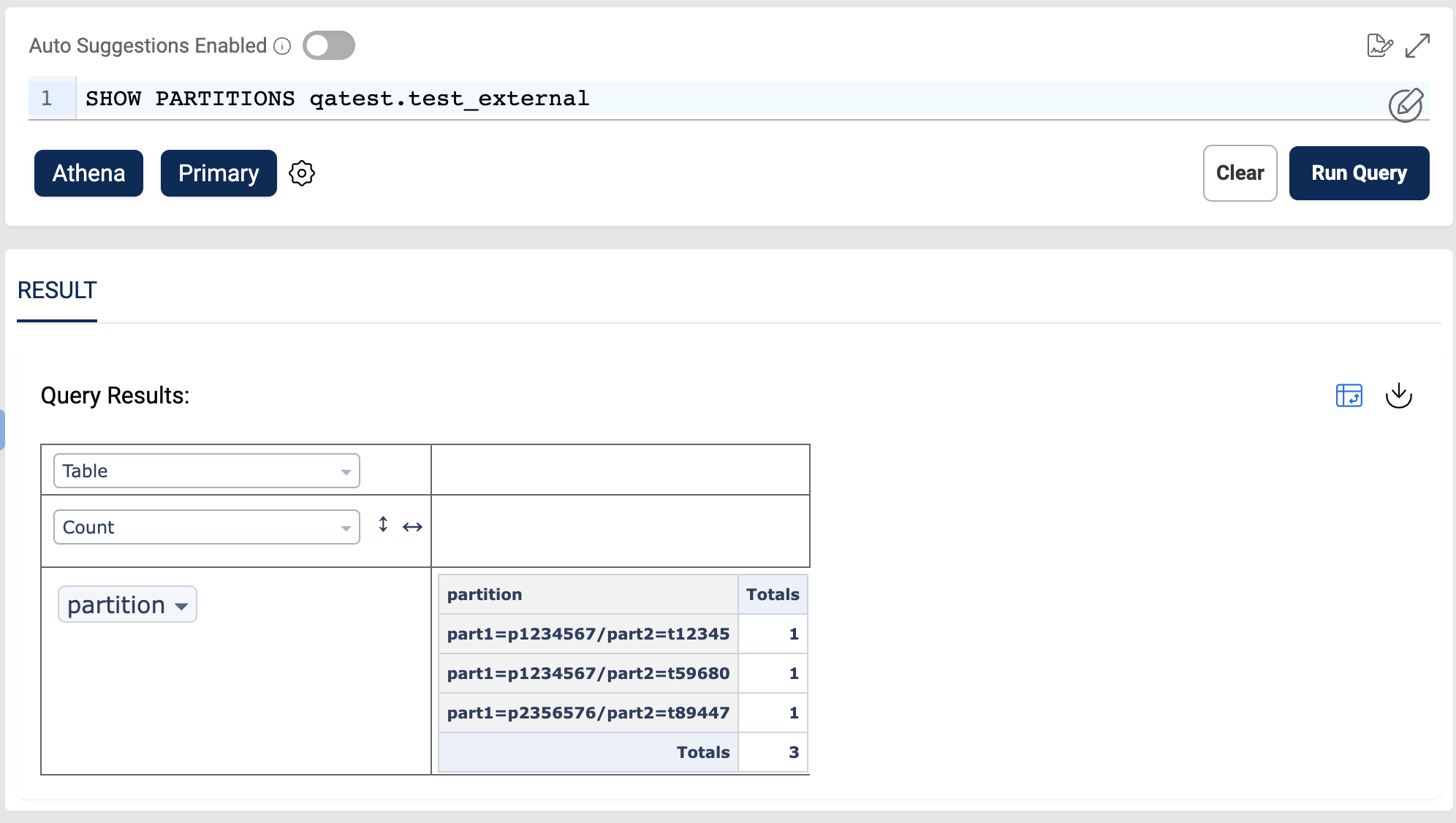
Querying Datasets
Querying the datasets through query engine is the same as for internal datasets. The queries supported on top of external datasets are:
- SELECT
- SHOW PARTITIONS
- ALTER TABLE ADD PARTITION
- ALTER TABLE DROP PARTITION
- ALTER TABLE RENAME PARTITION
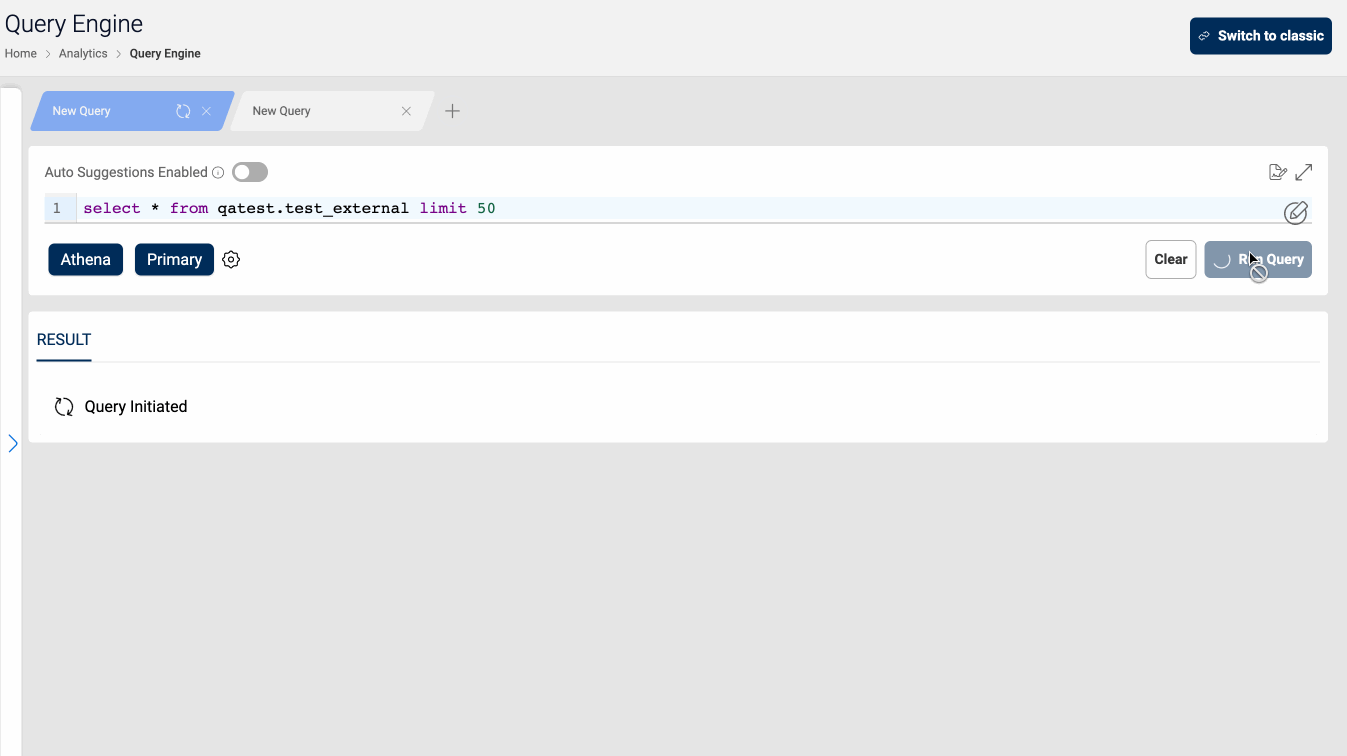
Dataset Access From ETL Jobs and Notebooks
For an External S3 dataset, in order to consume the data from ETL jobs or notebooks, users should create STS credentials with the dataset role, create boto3 session and use them to retrieve the S3 data. The code snippet below shows an example of listing objects in the source S3 path from an ETL job:
import boto3
DATASET_ROLE_ARN = 'arn:aws:iam::XXXXXXXXXXXX:role/<your-external-dataset-role-name>' ### The External Dataset Role Arn
S3_BUCKET_NAME = '<your-s3-bucket-name>'
AWS_REGION = '<region-where-amorphic-is-deployed>'
# Getting the dataset role credentials
sts_client = boto3.client('sts', AWS_REGION)
sts_credentials = sts_client.assume_role(
RoleArn=DATASET_ROLE_ARN,
RoleSessionName='job-role',
DurationSeconds=900
)['Credentials']
session = boto3.Session(
aws_access_key_id=sts_credentials['AccessKeyId'],
aws_secret_access_key=sts_credentials['SecretAccessKey'],
aws_session_token=sts_credentials['SessionToken']
)
s3_client = session.client('s3')
resp = s3_client.list_objects(Bucket=S3_BUCKET_NAME)
For an External LF dataset, in order to consume the data from ETL jobs or notebooks, user needs to add JOB_ROLE_ARN and NOTEBOOK_ROLE_ARN to the Principal of the bucket policy attached to source bucket:
Eg: JOB/NOTEBOOK_ROLE_ARN = arn:<aws_partition>:iam::<account_id>:role/<project_short_name>-custom-<notebook_id/job_id>-Role
Views
Views targeting Lakeformation can be created on top of external datasets. No other target locations are supported.
Limitations
The maximum resources(ETL jobs/notebooks) that can be attached to a dataset are limited by the role trust policy length quota of the AWS account. A maximum of 20 resources can be attached with the default quota of 2048 characters and 44 resources can be attached with the maximum quota of 4096 characters.
If an external dataset is created with a S3 path then that specific S3 path cannot be re-used to create another external dataset
Dataset repair cannot be performed for external datasets
Data validation, malware detection, data profiling, data metrics collection, data cleanup and lifecycle policies are disabled for external datasets
There is a 1 hour limit on the session duration for which you can assume the dataset role from an ETL job or notebook. (https://docs.aws.amazon.com/IAM/latest/UserGuide/id_roles_use.html)
- Write access is not allowed for external datasets i.e. file uploads, ingestion, writing data through Jobs/Notebooks and other file operations are disabled.
- Read Access:
- External datasets targeted to LF and S3 can be consumed through Amorphic Query Engine.
- In order to read the external datasets targeted to S3 in ETL jobs and notebooks, Users can add the external datasets in 'Dataset Read Access' dropdown and consume the data.
- In order to read the external datasets targeted to Lakeformation in ETL jobs and notebooks, Users have to add the external datasets in 'Dataset Write Access' dropdown which will ONLY provide read access to the external dataset through s3:GetObject permissions like the regular datasets. No write access (PutObject/DeleteObject) permissions will be provided to the Job/Notebook even though the dataset is added in 'Dataset Write Access' dropdown because Write access is restricted for external datasets as per design.